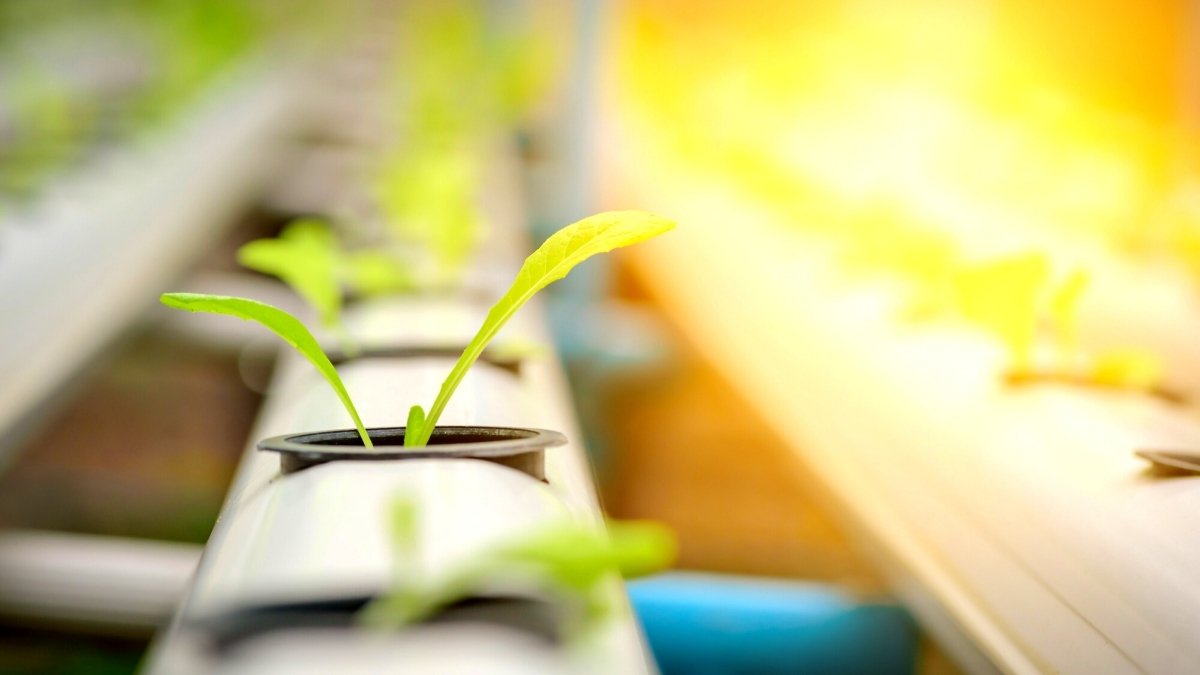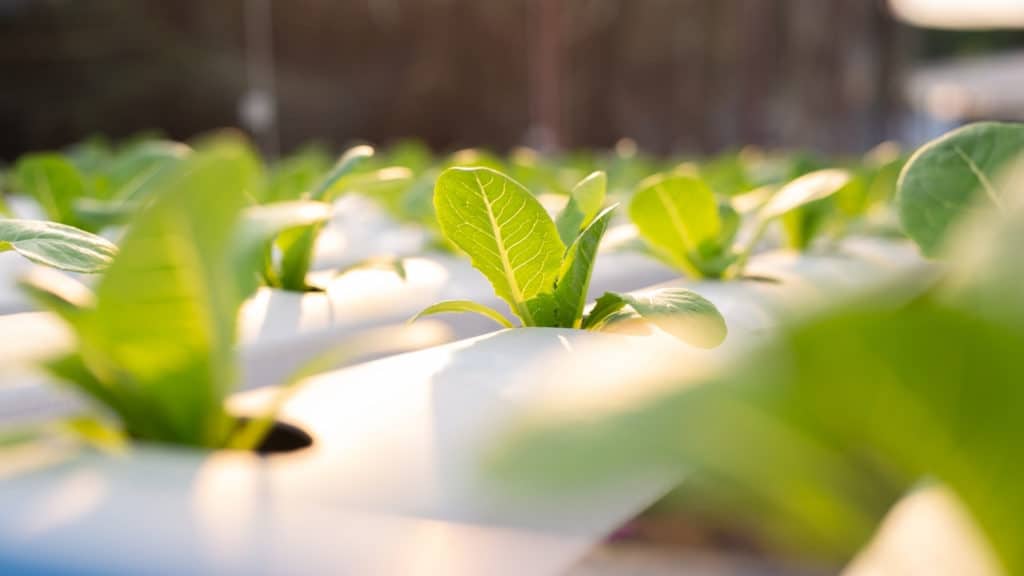The Top Tips for Outdoor Hydroponics Yields
Outdoor hydroponics offer a great solution for gardeners looking to keep their bills down and still reap abundant harvests. They require no additional climate control features like air conditioners and humidifiers, eliminate the need for specialized grow lights, and use natural sunlight to provide plants with extra nutrients.
Hydroponic systems also tend to yield more per square foot than soil-based gardens and require less effort from the gardener since there's no weeding necessary. Additionally, outdoor hydroponic systems are much less prone to insect damage due to its environment The exposure to natural predators keeps the population at bay.
10 Tips for Maximum Yields in Outdoor Hydroponic Gardens
Unveil the secrets to bountiful outdoor hydroponic gardens with these 10 essential tips. From proper nutrient management to environmental control, we'll guide you through proven strategies for maximizing yields in your outdoor hydroponic setup. Boost your harvest and achieve thriving plants with this comprehensive resource tailored for gardening enthusiasts.
Tip #1. Build Your Hydroponic Gardening System Outside During the Day
When building a hydroponic gardening system, it is best to do so outdoors during the day. Arguably the best benefit to outdoor hydroponic systems is that they don't require any type of grow lights because the plants can photosynthesize and grow with natural sunlight.
When scouting potential locations, consider factors like the angle and duration of sun exposure throughout the day. Many vegetables, such as lettuce, tomatoes, and peppers thrive on direct sunlight while others prefer more shade.
Try to set up your system in an area that receives at least 6-8 hours of uninterrupted sunshine per day and you may want to take into account seasonal variability in daylight as well. Avoid spots that are often exposed to heavy wind or rainfall because plant roots need oxygenated water for optimal growth and development.
Ensure No Outdoor Elements Shade the Hydroponic Garden
Shading is the number one enemy of any outdoor hydroponic garden. Anything that obstructs sunlight like trees, buildings, or other structures can lead to irregular climate conditions, which can have a negative impact on the plants in the garden.
Exposure to sunlight is an essential component for photosynthesis and plant growth so it's important to make sure there are no elements shading the garden. To help ensure this, start by pruning overhanging branches and taking down nearby trees that are shading susceptible areas.
This is especially important for any south-facing sections of the garden because these tend to get more direct sunlight exposure throughout the day.
Tip #2. Maintain Cool Water Temperature for Ideal Growing Climates
Maintaining cool water temperature when growing hydroponically is essential for a successful harvest. Water that is too hot can lead to wilting of the plants and greatly reduce growth. Direct sunlight combined with high heat levels, especially in hotter climates, can quickly raise the water temperature leading to an increase in evaporation. This could not only significantly reduce the potential yield but also drastically increase your water bill!
Luckily, there are a few easy and affordable ways to maintain a cool water temperature for your outdoor hydroponic garden. Depending on the size and scale of your garden, there are several water chillers available that you can purchase online or at gardening stores; while this is the most expensive option, it is also arguably the most effective one with minimal maintenance required.
If you have limited funds, consider covering part of the reservoir with black plastic wrap as this will help protect from direct sunlight and reduce overall evaporation. Another method is to plant shade-tolerant species around your baskets as this will help reduce ambient air temperature drastically by blocking off direct sunlight exposure to a large area surrounding the plants.
Tip #3. Lower the Electrical Conductivity (EC) for Plant Nutrient Uptake
Lowering the electrical conductivity (EC) of a hydroponic nutrient solution is a vital part of successful crop growth. The EC should be tailored to the needs of each specific plant species, depending on their developmental stages.
For example, plants in the vegetative stage will require an EC of around 1.3 whereas higher concentrations might be needed during flowering and fruiting.
It's important for outdoor hydroponic growers to pay close attention to their nutrients solutions as they develop, especially if they're up against extreme weather conditions.
Tip #4. Prepare Plants for the Outdoor Heat
Heat stress can be a major issue for gardeners and green-thumbs alike, as it can stunt growth and reduce the yields of plants. Thankfully, there are some proactive steps you can take to prepare your plants for hot weather.
Cooling the water is one strategy, but adding humic acid and liquid kelp to your nutrient solutions early in the season is an effective way to get ahead of any potential issues.
Humic acid and kelp stimulate root growth, making it easier for plants to absorb water they need to perform evapotranspiration, as well as strengthen their cells so they are less susceptible to damage from heat stress and direct sunlight.
A suggested ratio for applying this mixture is 5:2 during the spring months. Taking these extra steps will help protect your plants when temperatures start rising later in the season.
Tip #5. Ensure Proper Airflow to Prevent Overheating and High Humidity
Keeping your hydroponic garden properly ventilated is one of the most important steps you can take to ensure the health and wellbeing of your plants. This can be achieved by making sure there is sufficient air movement, usually provided through natural breezes.
Outdoor ventilation is important in helping keep the stomata on plants open. Stomata are critical for allowing a plant to properly function. They allow excess water to be released as part of an evaporation process which helps cool down the plant, essential for keeping it alive when temperatures increase. Stomata also absorb CO2 for photosynthesis, as well as releasing oxygen as a waste product.
Having proper airflow outside not only helps with temperature maintenance but also humidity levels. Incorrect levels of humidity, just like too much heat, can cause major damage to your hydroponic garden and stunt plants’ growth and even cause them to die prematurely.
Tip #6. Deter Outdoor Pests for Optimal Plant Health
Keeping outdoor pests away is crucial for optimal plant health. The most important step is to make sure plants are getting all the nutrients they need, and sometimes extra calcium can help. When there is an adequate supply of nutrients, plants can build stronger cell walls to protect themselves against pests.
Even with healthy plants, seasonal pest infestations may still occur. In these cases, gardeners must use insecticides and other products to deter the pests. It's best to take a less toxic approach first before turning to more powerful solutions — start with insect and plant-disease control sprays.
Tip #7. Choose the Right Hydroponic Growing System for Outdoors
Hydroponics is a great way to grow plants outdoors, but choosing the right hydroponic growing system for outdoor use can be difficult. There are many different types of hydroponic systems, but not all are ideal for outdoor setups.
For example, a deep water culture system is best suited for indoor hydroponics and won’t be able to handle temperature fluctuations as well as other types of hydroponic systems. Top feed, aeroponics, or flood-and-drain systems are better for outdoor hydroponics as they are designed with outdoor conditions in mind and can handle temperature variations more easily.
For people who live in limited spaces or have smaller yards, vertical hydroponic systems might be the right choice. Vertical hydroponic systems have a small footprint on the ground and allow growers to maximize their garden space while growing more plants than traditional methods would normally allow.
Tip #8. Invest in UV-Protected Equipment to Prevent Damage
UV radiation can be incredibly damaging to hydroponic equipment, which is why investing in UV-protected gear is critical for the success of any outdoor garden. Ensuring the long-term health of a hydroponic system requires an extra measure of protection since most components aren't designed to handle immediate exposure to elements such as wind and rain.
Additionally, direct sunlight has the capacity to reduce output levels or even ruin parts that it's left exposed to its rays. A great preventative measure is building outbuildings next to your planted area, used primarily for sheltering sensitive system components such as lights and pumps from direct sun and rain.
Tip #9. Monitor Outdoor Hydroponic Plants Closely
Outdoor hydroponic gardens can be incredibly efficient, but they come with their own set of challenges. It is important to monitor them closely so that any potential problems are identified early and dealt with promptly.
This means keep an eye on temperature fluctuations, nutrient concentrations and insect activity. Any changes to these conditions can dramatically affect the rate of growth for the hydroponic plants in a negative way, resulting in decreased yields or poor quality crops.
In addition, if you notice any signs of disease or pests, it’s essential to intervene immediately before there’s widespread damage. And when soil-based gardens are displaying issues, it’s smart to perform soil tests to ensure optimal PH levels along with testing for nutrients and mineral content.
Tip #10. Start with a Simple Outdoor Hydroponic Garden
Starting out as a hydroponic grower may feel overwhelming due to the complexity of the process, so it’s best to begin with a simple outdoor hydroponic garden. This will allow experienced growers to acquire more knowledge and gain experience while minimizing their investment in high-tech equipment.
This should involve setting up a basic net-pot or grow bed system that uses something like rockwool, coco coir, or clay pellets as the base of its growth medium. Deep water culture is great for beginners who want to learn quickly since it is one of the simplest forms of growing with no substrate needed other than an inert medium like expanded clay pellets at the bottom of each bucket or container.
Maximize Yields for Your Outdoor Hydroponic Garden Today
Outdoor hydroponic gardening has many advantages over traditional soil-based growing practices. Not only does it produce larger yields in a much shorter period of time, but it also requires fewer external inputs than indoor hydroponic setups. As such, with some preliminary research and the right supplies from a reputable provider, outdoor hydroponic growers can really maximize their yields.
At Canada Grow Supplies, we specialize in helping growers of all levels get the most out of their outdoor hydroponic gardens. From our great selection of top-tier supplies to our knowledgeable experts that are available to answer your questions, we provide everything you need to start achieving higher returns on investment with your outdoor garden today!












